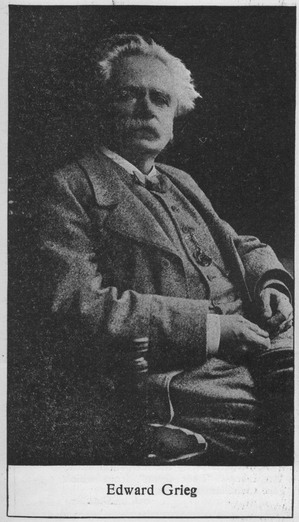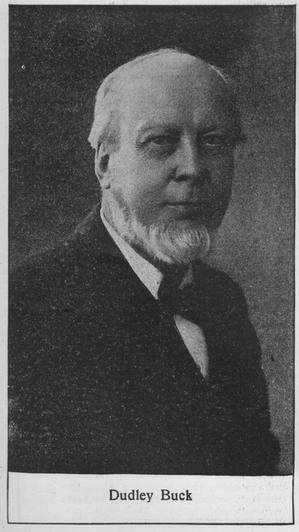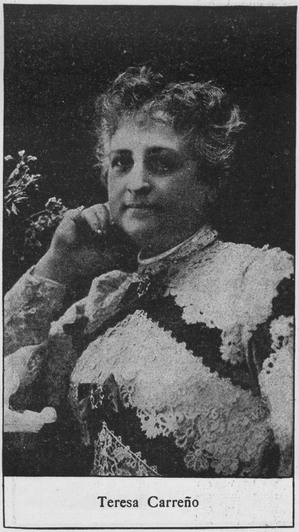Grieg was born June 15, 1843, at Bergen, Norway, where he died, September 4, 1907. His first instructor was his mother, a highly gifted musician. The influence of Ole Bull, the violinist, to whom the lad became passionately attached, was responsible for his being sent to Leipsic, 1858. He studied theory and composition under Reinecke, Hauptmann, Richter and Rietz, and pianoforte playing under Moscheles and Wendel. The Mendelssohnian influences of the Conservatory were not too well suited to his romantic spirit, and it was not till his return to Norway that his true genius asserted itself. Here his friendship with Nordraak, a young Norwegian composer, did much to imbue him with the national spirit of Norway. Gade, to whom Grieg often went for advice, used to complain that his music was “too Norwegian,” which, of course delighted Grieg. The sympathetic appreciation of Liszt, whom he twice visited in Rome, and the growing appreciation of the outside world convinced him that he was right. A successful performance of his A Minor Piano Concerto at a Gewandhaus concert, under his direction in Leipsic, 1879, and his concert tours firmly established him as a composer. As a composer of larger works he is best known perhaps by the incidental music to Isben’s “Peer Gynt,” from which the familiar suite is derived.
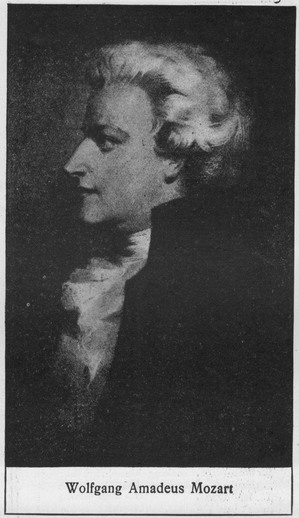 WOLFGANG AMADEUS MOZART.
WOLFGANG AMADEUS MOZART.
(Mo’tzart)
Mozart was born at Salzburg, January 27, 1756, and died in Vienna, December 5, 1791. He received all his musical instruction from his father, at that time Master of Court Music. His remarkable genius evinced itself early in life, and he was allowed to take lessons on the clavier during his fourth year. At six he was already a composer, and was taken by his father to the court of Vienna, where he was hailed with delight. From thence, after a brilliant month or two in Paris, he was taken to London. His success was instantaneous, and he remained there for fifteen months. After further continental tours, father and son—and daughter, for his sister was almost as remarkable a prodigy as Wolfgang—were again in Salzburg. In 1769 Mozart was taken to Italy, and here again good fortune attended him. At Milan, when only fourteen, Mozart was commissioned to write an opera. After four years, a return was made to Salzburg, and from this time on Mozart was unlucky. A second visit to Paris proved a failure, but “Idomeneo,” an opera produced in Munich in 1781, was successful. The following year he was in Vienna, where he married. At this time he formed a great friendship with Haydn. In 1786 “The Marriage of Figaro” was produced, and a year later “Don Giovanni.” Ill-health and misfortune were breaking him down, but nothing of it is shown in “The Magic Flute,” 1790.
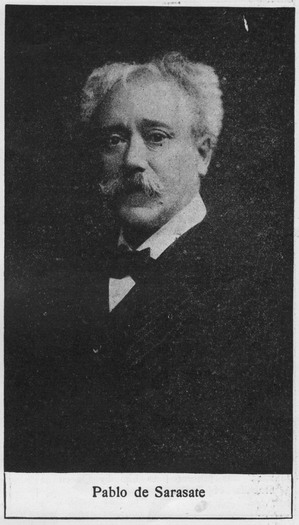 PABLO de SARASATE.
PABLO de SARASATE.
(Sarra-sah’teh)
Sarasate was born in Pampeluna, Spain, March 10, 1844, and died at Biarritz, September 21, 1908. At the age of twelve he already possessed some proficiency on the violin, and on January 1, 1856, he entered the Conservatoire of Paris as a violin student. He became a favorite pupil of Alard, under whose tutorship he gained the first prizes. He entered Reber’s harmony class, but relinquished that study in order to take up his career as a virtuoso. His consummate skill and attractive personality speedily won him distinction in Paris and the French provinces, and endeared him to the hearts of his fellow-countrymen. But Sarasate was a nomad by instinct, and sought a wider field. He played all over Europe and in North and South America. He made a second visit to America in 1889, in company with D’Albert. In all his wanderings he achieved brilliant success. Flexibility of tone was his chief characteristic, and, while not lacking in the warmth and fire his Spanish blood warranted, he will always be remembered as the chief exponent of liquid melody. As a composer for the violin, he wrote much that was well calculated to display his ability. His four books of Spanish dances are among the most popular violin solos in existence. Sarasate possessed two Stradivari violins, one of which, dated 1724, was presented to him by Queen Isabella of Spain.
Dudley Buck was born of good New England stock at Hartford, Conn., March 10, 1839. He was originally intended for a commercial career, but a flute and a book on thorough-bass proved his undoing. At sixteen he owned a piano, a rare asset in those days. A few lessons enabled him to take a church position. At the age of nineteen he succeeded in persuading his parents to permit him to take up the study of music definitely. He went to Leipsic, studying at the Conservatory, under Hauptmann, Richter and Rietz, for theory, and for piano under Plaidy and Moscheles. After three years in Germany, he spent a year in Paris. Buck then returned to Hartford, where he established himself as a teacher and organist. Fifteen years of concert-organ recitals followed. In 1869 he went to Chicago as organist at St. James’, and lost many valuable manuscripts in the fire. He then removed to Boston. In 1875 he acted as assistant conductor to Theodore Thomas at the Cincinnati Music Festival, and also at the last series of concerts in Central Park, New York. Mr. Buck made his home in Brooklyn, where he was organist at Holy Trinity Church, and conductor at the Apollo Club. In 1903 he retired, and has since lived in Munich, Dresden and Brooklyn. As a composer, he has written with great success for the orchestra, has produced many cantatas, and a great deal of admirable church music. It is by the last, probably, that he will be best remembered.
Mme. Carreno was born in Caracas, Venezuela, December 22, 1853, and received her first music lessons from her father, at one time a Minister of Finance. Quite early, however, she was brought to New York, where she studied under L. M. Gottschalk. She also studied in Europe under Mathias, and Rubinstein. Her first public appearance was made at the age of nine at a charity concert at the Academy of Music in New York. She subsequently toured the States. Later she gave up piano playing for a time and adopted the opera stage. Her first appearance in this capacity was made in the part of the Queen in “Les Huguenots,” which she took up at four days’ notice to oblige Mapleson. In 1875 she became a member of a company under the direction of Maurice Strakosch. The company included Brignoli and Tagliapietra. The latter subsequently became her husband after her separation from Emil Sauret. In 1892 she married Eugen D’ Albert, from whom she parted three years afterwards. While touring Venezuela with Tagliapietra’s company, Mme. Carreno directed the performances for three weeks, during a quarrel between the regular conductor and the singers. In 1889, however, she resumed the concert stage, and appeared as a pianist. From that time her fame steadily increased, until now she has come to be regarded as unquestionably among the front rank of the pianists of to-day.
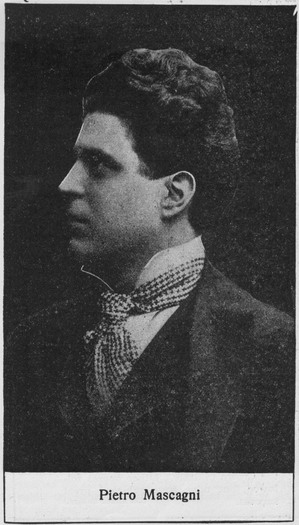 PIETRO MASCAGNI.
PIETRO MASCAGNI.
(Mas-kahn-ye.)
Mascagni was born at Leghorn, December 7, 1863. Originally intended for the law, he studied music unknown to his father at the Instituto Luigi Cherubini under Alfredo Soffredini. His father’s discovery would have put a stop to this but for the intervention of an uncle with whom the lad went to live. Some small successes with his compositions led to reconciliation with his father, and he returned home on the death of his uncle, and was allowed to continue his studies in peace. Count de Larderal, a wealthy amateur, impressed with a setting of a translation of Schiller’s “Ode to Joy,” paid his expenses at the Conservatory at Milan. Mascagni, however, found the routine irksome, took French leave of his professors, and became the conductor of a traveling Opera Company. From then on he led a wandering life of obscurity and poverty. He at last married and settled down at Cerignola, near Foggia, where he earned a precarious livelihood by teaching piano, and managing the municipal school of music. A prize competition, instituted by the publisher, Sonzogno, in 1889 was won by Mascagni with “Cavalleria Rusticana.” The work was produced in Rome, 1890, and the composer at once became famous. Honors were showered upon him, and the King of Italy presented him with the Order of the Crown of Italy. Other operas followed, but none have achieved great success.


